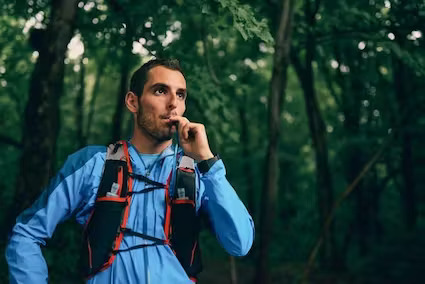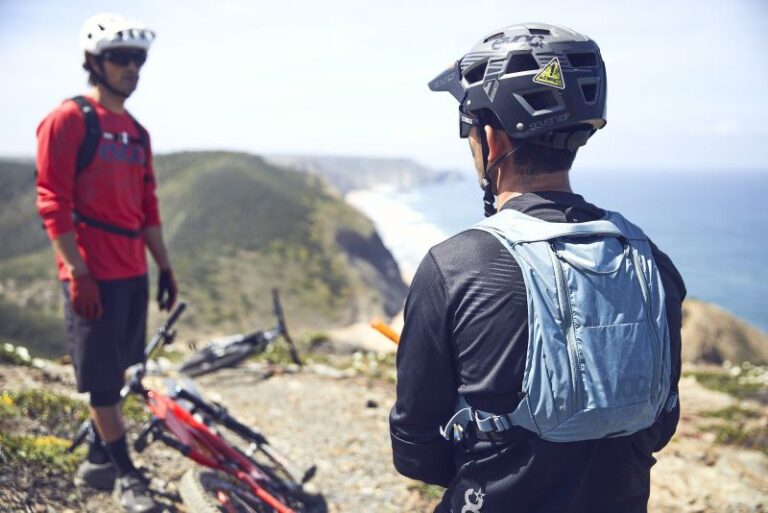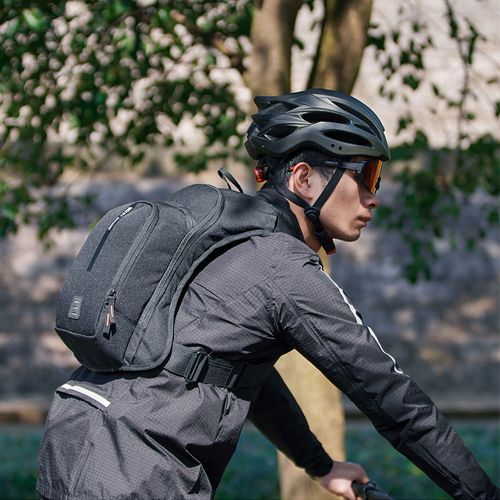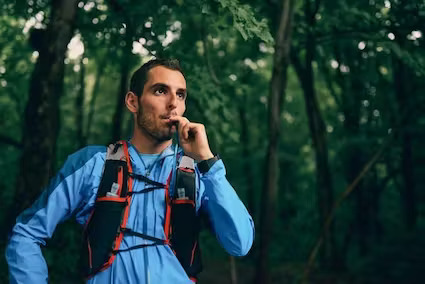Green Riding Gear: Choosing Eco-Friendly Hydration Packs

Key Point Summary of Choosing Eco-Friendly Hydration Packs:
- Environmental Impact: Understanding the importance of eco-friendly hydration packs in reducing our carbon footprint.
- Materials and Sustainability: What to look for in sustainable materials and design in hydration packs.
- Brand Responsibility: How to identify brands that are committed to environmental responsibility and sustainable practices.
As a master’s cyclist with years of experience in racing and riding across various disciplines like mountain biking, gravel biking, and cyclocross, I’ve developed a keen interest in how my gear choices, especially hydration packs, impact the environment. In this article, I’ll share insights on choosing eco-friendly hydration packs, vital for cyclists at beginner to mid-level experience who are also conscious about sustainable cycling gear.
Understanding the Environmental Impact
Cycling, in its essence, is an eco-friendly sport. But as I delved deeper into the world of competitive racing and endurance riding, I realized that the gear we use, particularly hydration packs, can have a significant environmental footprint. Traditional materials and manufacturing processes can be resource-intensive and harmful to the planet. Therefore, opting for eco-friendly hydration packs is a step towards more sustainable cycling practices.
Choosing Sustainable Materials and Design
When I first started looking for greener hydration options, I was overwhelmed by the choices. However, I learned that the key is to focus on materials and design. A truly eco-friendly hydration pack should be made from sustainable, preferably recycled materials. Look for packs made from post-consumer recycled plastics or naturally sourced materials. Also, consider the longevity of the product. A durable design that stands the test of time is more sustainable than one that needs frequent replacement.
I remember choosing a pack made from recycled water bottles. Not only did it serve its purpose on the trails, but it also felt good knowing I was reducing plastic waste.
Brand Responsibility and Commitment
One of my key learnings was the importance of supporting brands that are genuinely committed to sustainability. It’s not just about the product; it’s about the brand’s overall ethos. Look for companies that are transparent about their manufacturing processes, use renewable energy, and have initiatives for reducing their carbon footprint. Some brands also contribute to environmental causes, adding an extra layer of responsibility to their business model.
I recall being impressed by a brand that offered a repair and recycling program for their hydration packs, ensuring that their products didn’t end up in landfills.
Personal Experience and Recommendations
From my personal journey, I’ve learned that switching to eco-friendly hydration packs doesn’t mean compromising on quality or performance. These packs are often just as durable, functional, and comfortable as their traditional counterparts. I’ve used them in various races and training sessions, and they’ve held up brilliantly.
Moreover, I’ve found that using eco-friendly gear has a positive impact beyond just the environmental benefits. It fosters a sense of community and responsibility among fellow cyclists, encouraging more people to make sustainable choices.
Adding to our discussion on eco-friendly hydration packs, I came across a fascinating article that highlights a few products worth considering. Here’s a brief overview of the eco-friendly hydration vests mentioned in the article:
- Preowned Hydration Vests with New BPA and PVC-Free Water Bladders:
- The most sustainable option might be purchasing a used hydration vest and refilling it with a new, eco-friendly water bladder. Hydrapak bladders, for instance, are made from TPU, a recyclable material. This approach not only reduces waste but also extends the lifecycle of existing gear.
- Osprey Running Vests:
- Osprey offers running vests made from 100% recycled materials. They stand out not just for their material composition but also for Osprey’s commitment to lifetime repairs, which aligns perfectly with the principles of durability and sustainability.
- Patagonia Slope Runner Endurance Vest:
- Patagonia is known for its eco-conscious approach, and their trail running vest is partially made of recycled nylon. Although it contains some virgin nylon, Patagonia’s commitment to PFC-free products and offering lifetime repairs makes their vest a durable and eco-friendlier choice.
- Ecogear Hydration Pack:
- Ecogear’s 1.5 Liter hydration pack is another notable mention. It’s constructed from REPREVE, a fabric made from recycled materials like water bottles. While the performance aspect might need consideration, its material composition is commendable for eco-conscious cyclists.
These products reflect a balance between performance and sustainability. As cyclists, especially those of us involved in endurance sports, choosing gear like these eco-friendly hydration vests not only supports our performance but also aligns with our environmental values. Remember, focusing on the longevity and proper disposal of products is key to being a more conscious athlete.
This additional information from Gaiactive‘s article enriches our understanding of the available options in eco-friendly hydration gear, aiding us in making informed, sustainable choices.
Maintenance and Care for Longevity
Maintaining your eco-friendly hydration pack is crucial for its longevity. Regular cleaning and proper storage go a long way in preserving its quality. I always make sure to empty and dry my pack after every ride. Avoid harsh chemicals for cleaning; instead, opt for mild, eco-friendly soap. This not only protects the material of the pack but also aligns with the overall goal of reducing environmental impact.
FAQ
How do you Sterilise a hydration pack?
To sterilize a hydration pack, mix a solution of water and a sterilizing agent like bleach (2-5 drops per liter) or a specialized cleaning tablet. Fill the reservoir with this solution, let it sit for about 30 minutes, then rinse thoroughly with clean water to ensure all bleach or cleaner is removed. Dry completely before storing.
Which brand of hydration pack is the best?
For eco-friendly hydration packs, Osprey and Patagonia are often considered among the best brands of hydration packs. They are recognized for their commitment to sustainability, using recycled materials, and offering repair services to extend the lifespan of their products.
Osprey offers a variety of hydration packs that cater to different needs and preferences, each with its unique features. Some notable models include:
Osprey Sylva/Syncro Series: These are ideal for hot climates or activities that require extra ventilation. They come in different sizes (5, 12, 20 liters for Syncro and 5, 12 liters for Sylva) and are designed for increased comfort and stability. They include features like a mesh hip belt for the larger packs and a padded hip wing for the smaller ones, offering a stable feel and additional storage
Osprey Katari/Kitsuma Series: These are the smallest in the Osprey Hydration pack lineup, designed for speed and ease of use. They are available in 7-liter, 3-liter, and 1.5-liter sizes, each equipped with a corresponding Hydraulics LT Reservoir. They are lightweight and feature an Avalon foam frame sheet and an Airscape suspension for increased ventilation
Osprey Raptor/Raven Series: These are mountain-bike-specific hydration packs focusing on top materials, comfort, fit, and functional features. They come in 14- and 10-liter sizes and feature a 2.5-liter reservoir, Airscape Backpanel for ventilation, and a removable tool roll organizer
How do you keep hydration packs clean?
To keep eco-friendly hydration packs clean, rinse them with warm water after each use, use a mild, eco-friendly soap for occasional deep cleans, and ensure they’re completely dry before storing. Regular maintenance prevents mold and bacterial growth, extending the pack’s lifespan.
Final Thoughts
Choosing eco-friendly hydration packs is more than just a trend; it’s a responsible decision that contributes to sustainable cycling. As someone deeply involved in various cycling disciplines, I’ve seen firsthand how small choices can lead to significant environmental impacts. By opting for sustainable cycling gear, like green hydration packs, we contribute to a healthier planet. We also set an example for the cycling community, showing that performance and environmental responsibility can go hand in hand.
So, the next time you’re in the market for a new hydration pack, consider its environmental impact. Look for sustainable materials, durable design, and choose a brand that aligns with your environmental values. Your choice not only benefits you but also contributes to a greener future for cycling and our planet.
John






